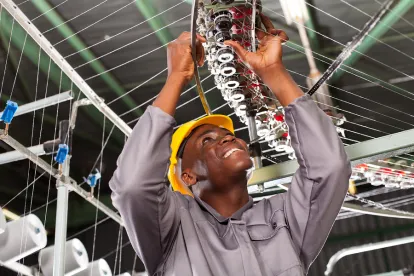The worker shortage in manufacturing has been exacerbated by the 2020 COVID-19 pandemic, which erased over a decade of job gains in the manufacturing sector, eliminating more than 1.4 million positions, according to a report by Deloitte and the Manufacturing Institute (MI). To counter the trend, manufacturers should consider working with local schools and youth programs to develop a sustainable pipeline of talent.
While approximately 820,000 of the jobs lost in the COVID-19 pandemic have since been backfilled, nearly 500,000 positions remain open and manufacturing employers have had difficulty filling these roles. According to the MI report, manufacturing employers say it is currently 36 percent harder to find talent than it was in 2018, even though the unemployment rate today is much higher. This manufacturing employment shortage is likely to intensify as the number of unfilled manufacturing positions in the United States is expected to grow to approximately 2.1 million by 2030 — damaging the U.S. economy by up to $1 trillion.
While the pandemic certainly played a large role in damaging the U.S. manufacturing sector’s employment numbers, the worker shortage is nothing new. There are approximately five million fewer Americans employed in the manufacturing sector today than 20 years ago. Employers hope to reverse this trend and are under pressure to do so quickly as the median age of an American working in manufacturing is 44 years old, and older workers are retiring faster than they are being replaced.
Manufacturers may want to consider working with local schools and youth programs to develop a sustainable pipeline of talent in their communities as manufacturing conglomerate ABB has done in Fort Smith, Arkansas. In an interview with Boston news station WBUR, Jason Green, ABB’s head of human resources, explained that “like most U.S. manufacturing companies[,] … we’re dealing with several workforce challenges,” including a growing skills gap among younger people who could otherwise replace retiring workers. In an effort to close that gap, ABB’s Fort Smith branch has begun working with local middle schools to set up a framework for technical training in the classroom. As Green explained, “It starts back in middle school, because if we try to recruit students [when] they’re in 11th or 12th grade, it’s almost too late.” Green further notes that ABB has partnered with the local Girl Scouts community to offer a merit badge for science and technology skills applicable to manufacturing.
Similar grassroots efforts to develop local skilled manufacturing workers may be necessary for manufacturers located in the United States to fill their open positions because the U.S. government does not currently prioritize the training of such workers. In comparison, Mexico’s government and national educational institutions support manufacturing job training as Mexico recognizes the manufacturing sector as a key component of its economy. Mexico has built manufacturing training centers that apply a German apprenticeship model for hands-on learning tailored to meet each manufacturer’s specific goals. Programs like these are pivotal to Mexico’s replenishment of its employee pool in the manufacturing sector and are largely responsible for Mexico’s evasion of the manufacturing workforce drought that is currently plaguing the United States.
As U.S. manufacturers search for ways to fill thousands of job openings with skilled workers, replicating ABB’s model of establishing a talent pipeline through joint ventures with local public and vocational schools may be a viable solution. Such an approach has multiple benefits as it both educates students about alternative career paths (as opposed to a traditional four-year college degree) and develops good will and brand awareness within the community that the manufacturer operates.




 />i
/>i
